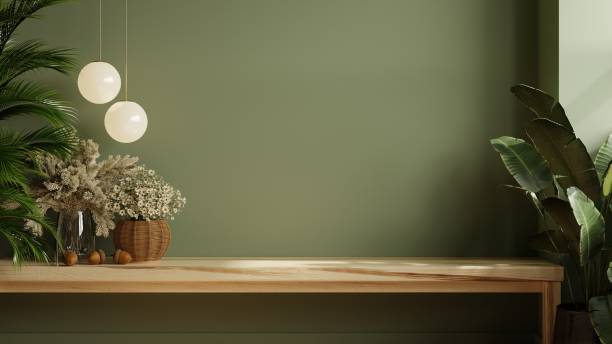Embracing Wabi-Sabi in Western Home Design
The fusion of Eastern philosophy with Western aesthetics has given birth to a captivating trend in home design: the incorporation of wabi-sabi principles. This ancient Japanese concept, which finds beauty in imperfection and transience, is reshaping how homeowners approach interior decor, offering a refreshing counterpoint to the polished perfection often sought in modern homes.

The Roots of Wabi-Sabi
Wabi-sabi originated in 16th century Japan as a reaction to the prevailing aesthetic of ornate, perfect, and costly displays. The term combines two concepts: ‘wabi,’ which refers to the beauty of simple, nature-inspired elegance, and ‘sabi,’ which embraces the passage of time and the marks it leaves behind. Together, they form a worldview that finds profound beauty in the humble, imperfect, and ephemeral aspects of life.
In traditional Japanese culture, wabi-sabi manifested in tea ceremonies, where simple, handmade utensils were prized over elaborate ones, and in architecture that embraced natural materials and minimalist design. This aesthetic philosophy deeply influenced Japanese art, literature, and daily life, emphasizing mindfulness and appreciation for the present moment.
Wabi-Sabi Meets Western Interiors
The introduction of wabi-sabi principles to Western home design represents a significant shift from the pursuit of perfection to an appreciation of authenticity. This trend has gained traction as homeowners seek more meaningful, personalized spaces that reflect a slower, more mindful approach to living.
In Western interiors, wabi-sabi often translates to a preference for natural materials, handcrafted items, and a color palette inspired by nature. Unfinished or reclaimed wood, raw stone, and organic textiles feature prominently. The goal is to create spaces that feel lived-in and evolving, rather than static and showroom-perfect.
Key Elements of Wabi-Sabi Design
To incorporate wabi-sabi into Western homes, designers and homeowners focus on several key elements:
-
Natural Materials: Emphasizing materials like wood, stone, clay, and linen that age beautifully and develop character over time.
-
Imperfect Beauty: Embracing asymmetry, rough textures, and visible repairs as elements that add depth and story to a space.
-
Minimalism: Adopting a less-is-more approach, focusing on functional items and avoiding clutter.
-
Neutral Color Palette: Using muted, earthy tones that create a calm, grounded atmosphere.
-
Handcrafted Items: Incorporating unique, artisanal pieces that showcase the human touch and slight irregularities.
Practical Applications in Western Homes
Implementing wabi-sabi principles in Western interiors doesn’t require a complete overhaul. Small, thoughtful changes can significantly shift the feel of a space:
-
Furniture: Choose pieces with natural finishes, visible grain, or gentle wear. A reclaimed wood dining table or a leather armchair that softens and patinas with use embodies the wabi-sabi spirit.
-
Textiles: Opt for natural fibers like linen, wool, or cotton in muted tones. Embrace wrinkles and imperfections in fabrics as part of their charm.
-
Decor: Display handmade ceramics, imperfect but cherished family heirlooms, or found objects from nature. A bowl of smooth river stones or a vase of dried wildflowers can add wabi-sabi touch.
-
Walls: Consider lime wash or textured plaster finishes that add depth and subtle imperfections to walls.
-
Plants: Incorporate plants with naturally imperfect forms, like bonsai trees or trailing vines, to bring living wabi-sabi elements into the space.
The Psychological Benefits of Wabi-Sabi Interiors
Beyond aesthetics, adopting wabi-sabi principles in home design can have profound psychological benefits. This approach encourages mindfulness, acceptance, and a slower pace of life – qualities increasingly sought after in our fast-paced, digital world.
Living in a wabi-sabi inspired space can help reduce stress by removing the pressure of maintaining a perfectly polished home. It fosters a deeper connection with our surroundings, encouraging us to notice and appreciate the small details and changes in our environment.
Moreover, the wabi-sabi aesthetic aligns well with sustainable living practices. By valuing items that age well and can be repaired, it counters the throwaway culture prevalent in many Western societies.
Challenges and Considerations
While the wabi-sabi aesthetic offers a refreshing approach to home design, it’s not without its challenges in a Western context. The concept can be misunderstood as simply ‘shabby’ or ‘unfinished,’ leading to spaces that feel neglected rather than intentionally curated.
Balancing wabi-sabi principles with modern comforts and technologies can also be tricky. The key lies in thoughtful integration – perhaps hiding smart home devices in natural materials or choosing appliances with simple, timeless designs.
Additionally, the wabi-sabi approach may conflict with certain Western cultural norms, such as the desire for matching sets or perfectly symmetrical arrangements. Embracing this aesthetic often requires a shift in mindset and a willingness to see beauty in unexpected places.
The Future of Wabi-Sabi in Western Design
As Western societies continue to grapple with issues of overconsumption, stress, and disconnection from nature, the appeal of wabi-sabi is likely to grow. We may see this philosophy influencing not just interior design, but also architecture, product design, and even urban planning.
The integration of wabi-sabi with other design trends, such as eco-friendly materials and smart home technology, could lead to innovative solutions that balance aesthetics, functionality, and sustainability. As more people seek authentic, meaningful living spaces, wabi-sabi offers a timeless yet fresh perspective on what makes a house a home.
In embracing wabi-sabi, Western homeowners are not just adopting a design trend, but a philosophy that encourages a more mindful, appreciative way of living. It’s a reminder that true beauty lies not in perfection, but in the stories, experiences, and natural rhythms that shape our spaces and our lives.




